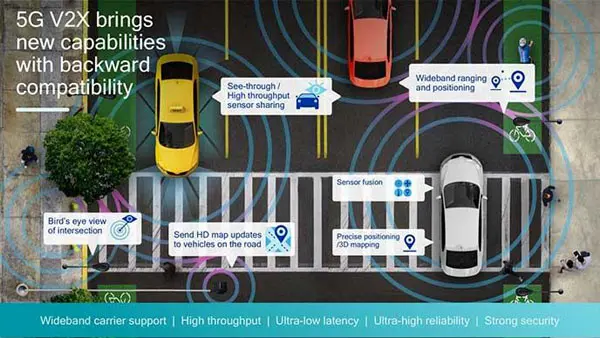AT&T, Ford, Nokia and Qualcomm to trial C-V2X connected car technology

AT&T, Ford, Nokia and Qualcomm Technologies Inc. are helping to accelerate the development of connected cars with the first-announced cellular-V2X (C-V2X) trials in the USA.
The C-V2X testing is expected to take place in the San Diego Regional Proving Ground in California with the support of the San Diego Association of Governments (SANDAG), Caltrans, the City of Chula Vista, and intelligent transportation systems (ITS) provider McCain Inc.
The goal of the trials is to demonstrate the potential of C-V2X technologies, including support for improved automotive safety, automated driving, and traffic efficiency. The trials will also be aimed at demonstrating to auto makers and road operators the anticipated cost-efficient benefits associated with embedded cellular technology in vehicles, and synergies between the deployment of cellular base stations and roadside infrastructure. The initial testing phase is expected to begin later this year.
Using direct communication mode, C-V2X is designed to help expand the role of wireless technology for road safety applications by facilitating the ability of vehicles to directly communicate with other vehicles, pedestrian devices, and roadside infrastructure, such as traffic signs and construction zones, using the 5.9GHz band, without the involvement of a cellular network, or cellular network subscription.
The San Diego region was designated by the US Department of Transportation (USDOT) as one of 10 automated vehicle proving grounds in the USA earlier this year. For this trial, C-V2X platforms are expected to be installed in Ford vehicles using the Qualcomm 9150 C-V2X chipset to facilitate direct communications, and complemented by AT&T’s 4G LTE network communications and ITS platform that takes advantage of wireless base stations and multi-access edge computing technology from Nokia. For the new communication technologies being deployed, McCain will help facilitate the effective integration with existing and emerging traffic signal control infrastructure.
Testing will support direct C-V2X communications operating in the 5.9GHz ITS spectrum to explore the safety enhancements of V2V use cases, such as warnings and alerts. The trials will also support advanced vehicle communication capabilities for improved traffic efficiencies, such as real-time mapping updates and event notifications, relayed using AT&T’s cellular network and Nokia Cloud Infrastructure.
“C-V2X technology promises to meet, and in some cases, exceed the performance requirements of vehicle communication being proposed by relevant government agencies, while leveraging existing in-vehicle connectivity frameworks,” said Don Butler, executive director of connected vehicle and services at Ford.
“C-V2X provides a reassuring path to technology advancements necessary to support emerging developments in autonomy, automated driving and mobility.”















![AIRBUS A380 [MORE THAN 600 PASSENGER’S CAPACITY PLANE]](https://cdn.tinn.ir/thumbnail/4jCp4EQvCU0b/IjHVrSYQrIAqIzXuTzADR7qLYX4idQT4nfq__26E5SCUPLMqfhWkWajvuO9Wfq1ql1TjV4dhkrHliNQU82kMpo2NNftT_NGEwHc9KXtN_rk731bmifa2IQ,,/airbus-a380-structure1.jpg)

Send Comment